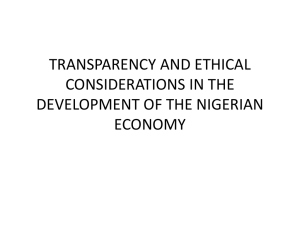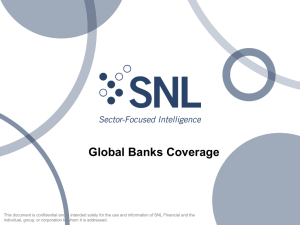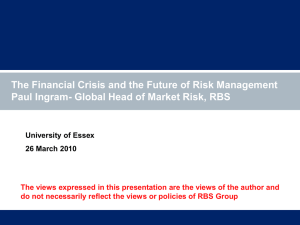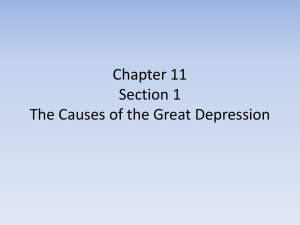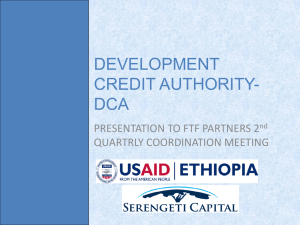สาขาการเงินของไทย
advertisement
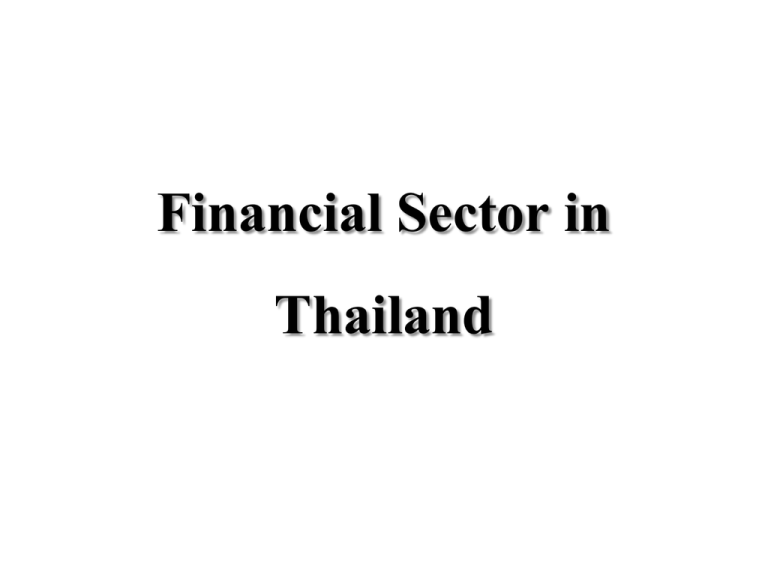
Financial Sector in Thailand References • วเรศ อุปปาติก เศรษฐศาสตร์ การเงินและธนาคาร 2544 บทที่ 6 และ 9 • อรวรรณ รัตนภากร “โครงสร้ างทางการเงินไทยใน ระดับมหภาค” บทความเสนอในการสั มมนาทางวิชาการ ประจาปี 2548 จัดโดย คณะเศรษฐศาสตร์ มหาวิทยาลัยธรรมศาสตร์ 14-15 มิถุนายน 2548 2 References • รุ่ง โปษยานนท์ มัลลิกะมาส, ดอน นาครทรรพ และ ผจงจิต จิตตะมัย “ความท้ าทายของธนาคารพาณิชย์ ภายใต้ การเปลีย่ นแปลงของสภาพแวดล้ อมทางเศรษฐกิจ และการเงิน” บทความเสนอในการสั มมนาทางวิชาการ ประจาปี 2548 จัดโดยธนาคารแห่ งประเทศไทย 3 Introduction • Financial sector: saving, lending, borrowing, investing – Role of intermediation between savers and investors – Promote efficiency in resource allocation 4 Structure of financial sector • Informal and formal sector • Informal sector: No state regulation e.g. personal loans – was significant (90% of total credit in 1962) – but much reduced and replaced by formal sector 5 Structure of financial sector • Formal sector: supervised and regulated by Bank of Thailand and other agencies – financial institutions, capital market 6 Structure of financial sector • Financial institutions: – Commercial banks – Development banks (Savings, Housing, SME and EXIM) 7 Structure of financial sector • Financial institutions: – non banks (finance companies, securities companies, asset management, small credit providers) – Others (insurance, agricultural and savings co-operatives, pawn shops) 8 Structure of financial sector • Commercial banks play biggest role • But capital market has expanded after the 1997 crisis 9 Commercial banks (before the crisis) • Before WW2, foreign banks dominated; business mainly related to foreign trade transactions • During WW2 Thai banks started to play more role e.g. Bangkok Bank and Kasokornthai Bank • In 1942, the Bank of Thailand was established 10 Commercial banks (before the crisis) • After WW2 – Policy of “no new entry, no exit” led to “moral hazard” problem – Financial liberalization in 1990 allowed Bangkok International Banking Facilities (BIBF), leading to foreign borrowing and financial crisis in 1997 11 Finance and Securities Companies ( before the crisis) • Finance companies are similar to banks, except they cannot accept deposits, so they borrow by issuing promissory notes and lend with higher risk • Finance companies were combined with securities brokers, thus subject to risks in stock market 12 Financial institutions during the crisis • Capital outflow, and bubble burst in real estate and stock market led to no confidence in financial institutions (start with finance and securities co’s and then banks) • Bank run, liquidity problem, and finally insolvency problem 13 Financial institutions during the crisis • BOT and Finance Ministry intervened by: – FIDF took over weak finance co’s and banks – New organizations dealing with bad assets – Allowed 49% foreign ownership in banks for 10 years (ABN Amro, DBS, Standard Chartered, UOB) – 100% deposit guarantee 14 Financial institutions during the crisis • Government finances FIDF through sale of bonds : taxpayers’ burden • Now 18 banks: Big Four + Medium + Retail banks 15 17 FI Recovery 2003- Present • Past lessons: important to have sound system with adequate nationwide services • FI Development Plan for nationwide financial service (rural and SME) and adaptive to future changes (universal banking) in 5-10 years 18 FI Recovery 2003- Present • New Financial Institution Law 2008 enables BOT to improve its regulatory practices • Improvement of credit bureau as central information on credit worthiness of debtors 19 FI Recovery 2003- Present • New Deposit Protection Institution to replace 100% deposit guarantee (moral hazard?) – 100% guarantee in the first year 2009 (extended to 3 years due to the hamburger crisis) – 100 million baht guarantee in the next year – 50, 10 and finally 1 million guarantee in consequent years 20




